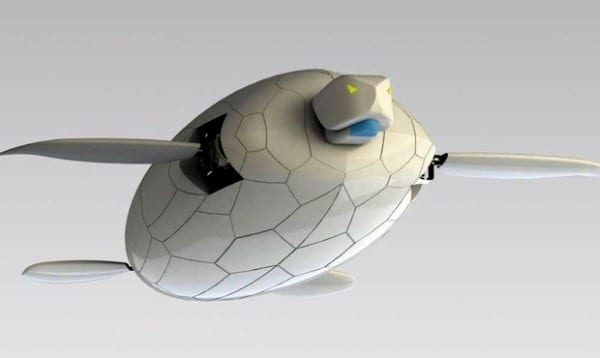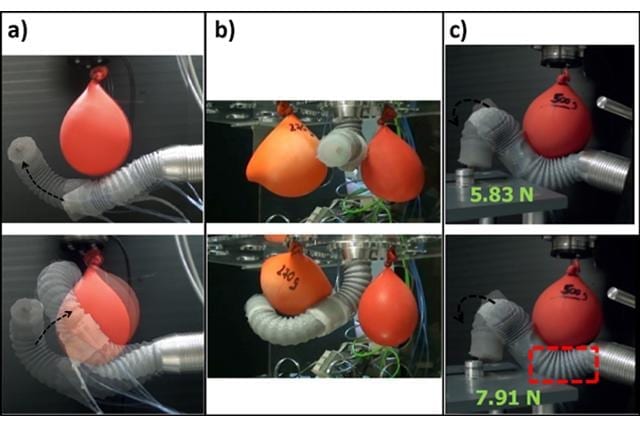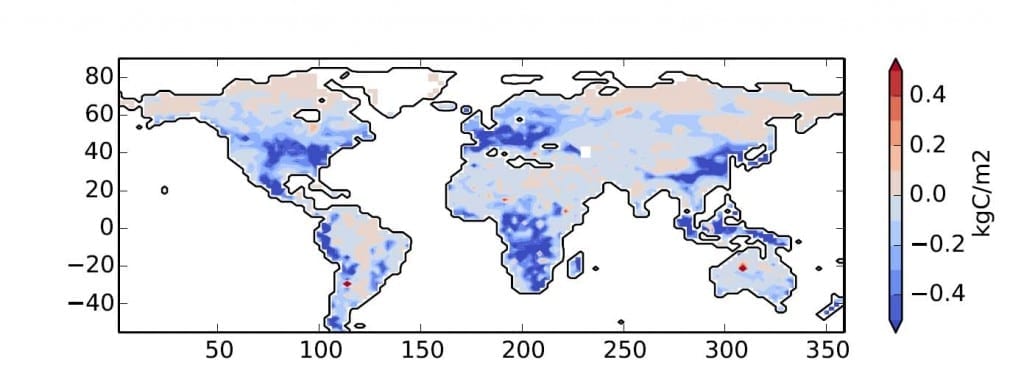
Latest turtle robot capable of performing more complicated tasks such as surveillance and energy harvesting, and operates on a self-charge mode
NUS Engineering researchers are closer to creating underwater robotic creatures with a brain of their own – besides behaving like the real thing. In the near future, it would not be too tall an order for the team to produce a swarm of autonomous tiny robotic sea turtles and fishes for example, to perform hazardous missions such as detecting nuclear wastes underwater or other tasks too dangerous for humans.
In the underwater robotic world, turtle robots are among the most maneuverable. The NUS team’s turtle robot, besides being maneuverable, can also go about determinedly performing what it is set out to do, while being able to react to exigencies and obstacles.
Associate Professor S K Panda leads a team of researchers at the Electrical and Computer Engineering Department who are involved in the research and development of biomimetic solutions in ocean engineering — looking towards nature for solutions to technical challenges with robots mimicking natural systems. The team is currently putting the final touches to a robotic sea turtle which could move about underwater, including diving to deeper depths vertically, like a real turtle, by just using its front and hind limb gait movements.
Explains Assoc Prof Panda, “Our turtle robot does not use a ballast system which is commonly used in underwater robots for diving or sinking functions. Without this ballast system, it is much smaller and lighter, enabling it to carry bigger payloads so that it can perform more complicated tasks such as surveillance, water quality monitoring in Singapore reservoir or energy harvesting for long endurance. Being able to do a dynamic dive or sinking vertically means that it can also enter vertical tunnels or pipes in the seabed with very small diameters.”
Being smaller and lighter would also enhance its energy efficiency. The NUS turtle robot is also able to self-charge, further reducing the need for it to return to base station for recharging. It is agile and able to turn sharp corners with small radius, without losing speed.
Added Assoc Prof Panda, “We can have a swarm of tiny turtles which communicate with each other and act collaboratively to perform their duties. With improved maneuverability they can go to tiny and narrow places like crevices where bigger vessels are unable to do so.”
Mr Abhra Roy Chowdhury who has been working towards lifelike underwater robots for the last three years for his PhD, said the team has designed and developed four other underwater prototypes – a spherical robot that mimics a puffer fish in structure but uses a jet propulsion technique similar to jellyfishes and squids; and three robotic fishes of different morphologies. These robots are scalable, modular and possess stealth (ability to avoid detection) features.
“If need be, we can actually combine all their merits in a single robot,” added Mr Chowdhury.
Read more: NUS researchers develop new-generation ‘thinking’ biomimetic robots as ocean engineering solutions
The Latest on: Biomimetic robots
[google_news title=”” keyword=”Biomimetic robots” num_posts=”10″ blurb_length=”0″ show_thumb=”left”]
via Google News
The Latest on: Biomimetic robots
- The best sales to shop this weekend: Baby Foot, Athleta, Bose and moreon April 26, 2024 at 9:12 am
This weekend, you’ll find a deal on an Eddie Bauer camping tent, a discounted travel steamer and savings on Bose QuietComfort Ultra Headphones. All that and more below.
- Top 6 Humanoid Robot Companies To Consider As A New Trend Potentially Takes Offon April 22, 2024 at 8:37 am
Discover the booming global market for humanoid robots set to reach $38 billion by 2035. Click for a full review of current humanoid robotics firm developments.
- How the Optimus Tesla Bot humanoid robot is madeon April 22, 2024 at 5:21 am
Tesla, renowned for its groundbreaking innovations in electric vehicles and sustainable energy, has moving into the realm of humanoid robotics over the ...
- Video: Multi-talented underwater robot uses fins to swim, walk and crawlon April 15, 2024 at 12:35 pm
A new underwater robot can swim through the water with fins, and walk or crawl along the bottom when necessary. These capabilities could really give it a leg up – pun fully intended – at outperforming ...
- Optogenetics Illuminates Cerebellum's Role in Neuroprostheticson April 15, 2024 at 9:24 am
The field of neuroprosthetics, which enables the brain to operate external devices like robotic limbs, is starting to gain traction as a potential treatment option for individuals who are ...
- Mimicking fish to create the ideal deep-sea submersibleon April 15, 2024 at 8:53 am
More than 80% of the Earth's ocean has yet to be mapped. This is due, in part, to the challenges associated with deep-sea exploration, including intense pressure, zero visibility and extremely cold ...
- 4D Printed robot dances and crawls via temperature shiftson April 14, 2024 at 5:00 pm
A race-chase scenario featuring two LCE robots. The 4D printed inchworm robot developed by the Jilin University team offers an exciting glimpse into this biomimetic future. Though still far from ...
- The best sales to shop this weekend: CeraVe, Bose, ColorWow and moreon April 12, 2024 at 9:00 am
This weekend, you’ll find a deal on a Nebula projector, a discounted Apple HomePod Mini and savings on a hair product from ColorWow. All that and more below.
- The Future of Sensory Robotics: An All-Optical Mechano-Sensor Mimicking Natural Sensillaon April 9, 2024 at 9:17 am
In a recent study published in Nature Communications , an all-optical mechano-sensor was developed inspired by mechano-sensitive hair-like sensilla (MSHS) using a thin-walled glass microbubble. This ...
- Bioprinted Skin Is Real, Here's How It Can Change The Futureon December 20, 2023 at 12:15 pm
These cells are cultured and combined with fibrinogen-based hydrogel bioinks to create a 3 cm–by–3 cm trilayer biomimetic skin construct ... Change The Future appeared first on GIANT FREAKIN ROBOT.
via Bing News










